#1434: New iPhone XR, XS, and XS Max; Apple Watch Series 4; upgrading to iOS 12, watchOS 5, tvOS 12, and macOS 10.14 Mojave
It’s time to start the cycle again. Apple last week introduced three new iPhone models and the Apple Watch Series 4, and today brought the release of iOS 12, watchOS 5, and tvOS 12, plus an iOS 12 update to the HomePod. We have all the coverage you need to make decisions about what to buy and when to upgrade. Notable Mac app releases this week include Microsoft Office 2016 16.17, MarsEdit 4.1.6, Audio Hijack 3.5.4, Piezo 1.5.10, and HoudahGeo 5.2.3.
When and How to Upgrade to iOS 12, watchOS 5, tvOS 12, and macOS 10.14 Mojave
As promised at its special event last week, Apple today released iOS 12, watchOS 5, and tvOS 12. We’re assuming that the company will stick to its plan to push out macOS 10.14 Mojave next week on September 24th.
Should you drop everything and download the updates immediately? If you’re an unrepentant early adopter, like many of us here at TidBITS, the answer is, “Obviously!” More power to you! May your downloads be quick and your backups be recent.
However, if you generally fall on the cautious side, or if you can’t risk your devices not working perfectly, here’s our advice on when you should think about installing these new versions.
iOS 12
Several of us here at TidBITS have been using iOS 12 betas all summer, and it has been a largely positive experience. We’ve heard from readers with older devices that its performance improvements have given a new lease on life to the iPhone 5s, iPad Air, and the like. One TidBITS Talk reader said it solved his iOS 11 battery problems. Josh Centers devoted his summer to Take Control of iOS 12, so you can read that for the full rundown on what’s new and necessary.
That said, you’ve been waiting this long, so what’s another week or two? We recommend holding off on installing iOS 12 for a bit, just to make sure no pressing problems crop up. If any widespread issues affect the iOS community, we’ll be sure to pass on the details.
If you’re change-averse, there’s no harm—apart from reduced performance and not taking advantage of new and enhanced features like Screen Time and Do Not Disturb—in waiting a few more weeks, or even a month or two. During that time, Apple will likely release a few bug fix updates like iOS 12.0.1 and 12.0.2. A few months later, the company usually issues a feature update that will probably be version iOS 12.1. But do install iOS 12 before too long, since otherwise you’ll be at risk for newly discovered security vulnerabilities that Apple doesn’t fix for older iOS versions.
When you are ready to upgrade, first read “Get Ready for iOS 12 by Backing Up, Cleaning Up, and Updating Apps” (10 September 2018). iOS 12 varies in size by device: we’ve seen it range from 1.35 GB on a 10.5-inch iPad Pro to 2.26 GB on an iPhone 5s. Once you’ve backed up to iCloud and iTunes (read the referenced article for why we say “and”), install iOS 12 by going to Settings > General > Software Update and tapping Download and Install. You can also install it through iTunes, but we recommend the over-the-air update instead due to Apple’s waning interest in iTunes.
iOS 12 on HomePod
We had no early access to the HomePod update that Apple just released, but after some quick installation and testing, there doesn’t seem to be any reason to wait. It’s possible that the device from which you initiate the installation may need to be running iOS 12. We were interested to see that Apple is calling the update “iOS 12” and not “HomePod 12” or “homeOS 12.”
The new features aren’t huge, but they’re still extremely welcome, particularly the capability to make and receive phone calls directly (for more on that, see “HomePod First Impressions: Let the (Apple) Music Play,” 12 February 2018, and “Beyond Music: Comparing the HomePod to Amazon Echo and Google Home,” 15 March 2018). You can also search for songs in Apple Music by their lyrics (in the US, UK, Australia, and Canada), set multiple timers, and ping your other iOS devices to locate them.
To install iOS 12 on the HomePod, open the Home app on your iPhone or iPad, tap the Details link under “HomePod software update available” and on the next screen, tap Install. At 1.5 GB, it’s a big download, but it installed reasonably quickly. The tricky part with the new capabilities is that you have to train yourself to invoke them with Siri.
watchOS 5
As with iOS 12, I’ve been running watchOS 5 on my Apple Watch Series 2 for a month or two, and I’ve experienced no problems. The new capabilities may not be game-changing unless you’re looking forward to Walkie-Talkie conversations with a friend or family member or if you regularly forget to start the Workout app before going for a run—the auto-start capability is welcome.
watchOS 5 requires that you are running iOS 12 on your Apple Watch’s associated iPhone, so we recommend that you upgrade to watchOS 5 as soon as you upgrade to iOS 12. watchOS 5 works with all models except the original Apple Watch.
To install watchOS 5, open the Watch app on your iPhone, go to My Watch > General > Software Update, and tap Download and Install. It’s a 340 MB update on my Apple Watch Series 2. Remember that the Apple Watch must be on its charger, charged to at least 50 percent, and within range of your iPhone, which itself must be on Wi-Fi. The update may take longer than you think it should—we recommend updating while you sleep. In fact, your Apple Watch may even suggest an overnight installation.
tvOS 12
Although we didn’t test betas of tvOS 12, readers have said that it has worked well. The promised changes are minimal: Dolby Atmos support for the Apple TV 4K, the new Earth screensaver, tapping the touchpad to identify an Aerial screensaver location, password autofill, an automatically added Apple TV Remote button in an iOS 12 device’s Control Center, and improvements for some TV providers (zero sign-on and cloud DVR support).
Unless you live and die by your Apple TV, we see no reason to delay the upgrade. For most people, tvOS is probably set to update itself automatically, and that’s fine. Let it install tvOS 12 whenever it wants, or force it to update right away in Settings > System > Software Updates.
macOS 10.14 Mojave
The release version of Mojave should become available for download on 24 September 2018. It poses a significantly trickier upgrade question. Even if you were testing the betas of Mojave, you probably weren’t doing so on your main Mac. Your experiences during the beta period should have given you a sense of whether you can install on Macs that you rely on to get your work done—you should know by now if your essential apps are compatible or not.
I’ve been running Mojave betas all summer on my MacBook Air, and honestly, I will not be installing the final release of Mojave on my 27-inch iMac right away. I’ve seen too many quirks and problems, a number related to the new privacy protections (see “Mojave’s New Security and Privacy Protections Face Usability Challenges,” 10 September 2018). Some of my Keyboard Maestro macros have stopped working, and I haven’t yet been able to figure out why. I’ve also been annoyed by the constant nagging of utility apps asking to control other apps or access privacy-protected data.
Therefore, I recommend that you wait to install Mojave on your main Mac until two things are true:
- Apple has released at least 10.14.1, if not 10.14.2. We hope those updates will squash early bugs and smooth out the authorization requests.
- You have verified, through community comments or discussions with developers, that your essential apps—particularly utilities!—will run properly in Mojave.
If you have a secondary Mac that’s not crucial to your workflow, go ahead and install Mojave there—Joe Kissell’s Take Control of Upgrading to Mojave is, as always, the canonical reference.
There you have it! We’ll be publishing coverage of the new features in all these upgrades in the coming weeks and months, so stay tuned.
When do you plan to upgrade? Let us know in our quick five-question survey.
Apple Focuses on X Appeal with the iPhone XR, XS, and XS Max
It’s official, the three new iPhones are the (relatively) inexpensive iPhone XR, the mid-level iPhone XS, and the big-screen iPhone XS Max. All three feature numerous bits of enhanced technology—Apple’s presenters kept saying that whatever subsystem they were talking about was the best/fastest/largest ever to ship in an iPhone. That’s reflected in the prices, which are also the Apple has ever charged for an iPhone.
- iPhone XR: 64 GB for $749, 128 GB for $799, 256 GB for $899
- iPhone XS: 64 GB for $999, 256 GB for $1149, 512 GB for $1349
- iPhone XS Max: 64 GB for $1099, 256 GB for $1249, 512 GB for $1449
(Despite those prices, Apple no longer includes a Lightning to 3.5mm Headphone Jack adapter, though they cost only $9.)
Pre-orders for the iPhone XS and XS Max opened on 14 September 2018 and they’ll ship on 21 September 2018. Those looking for an iPhone XR will have to wait a month—you can pre-order on 19 October 2018 for a ship date of 26 October 2018.
The names, which leaked ahead of the announcement, have been widely mocked. Apple does indeed say “iPhone Ten Ess,” not “iPhone Excess.” Don’t say it too fast, or you’ll be playing “iPhone Tennis.” And “Max” instead of “Plus”? It’s going to be all too easy to write “iPhone XS Mac” accidentally. Also, as alliteratively awkward as it is, the S at least makes sense for an alternate year model, which Apple has done since the iPhone 3GS, when Phil Schiller said it stood for “Speed.” Who knows where the R in iPhone XR comes from or stands for? Both the S and R are technically small caps, and Apple seems to have switched back to full capital letters when it can’t write the names using small caps. The company jumped from iPhone 4S to iPhone 5s and iPhone 6s before coming back around to iPhone XS and iPhone XR. At least the change will make possessives and plurals easier (see “Ruminating about Apple’s Lowercase Letters,” 11 September 2013).
Nomenclature aside, all three follow in the footsteps of last year’s iPhone X, dropping the Home button and Touch ID in favor of Face ID and the ubiquitous notch. If you really want Touch ID, or just want to save some money, Apple is keeping the iPhone 7 (starting at $449) and iPhone 8 (starting at $599) in the lineup. Gone, but certainly not forgotten, is the small-screen iPhone SE. It will be much missed by those with smaller hands and smaller or nonexistent pockets.
What the new iPhones all have in common
Apple made much of the fact that all three phones are powered by the company’s new A12 Bionic chip, which boasts up to 15% faster performance, 50% less power consumption, and 50% faster graphics performance than last year’s A11 Bionic. It also features a next-generation Neural Engine that can run machine learning operations up to nine times faster than the A11 Bionic. Apart from generally improved performance, the A12 Bionic enables new computational photography capabilities, such as depth of field editing after the fact and Smart HDR photos that combine even more images into a single perfectly exposed shot.
Speaking of cameras, the iPhone XS and XS Max feature identical dual 12-megapixel rear-facing cameras, and all three models share the same 7-megapixel TrueDepth front-facing camera. While the iPhone XR has only a single 12-megapixel rear-facing camera, it can still take photos in Portrait mode thanks to the A12 Bionic’s Neural Engine. However, the iPhone XR cannot do 2x optical zoom because that requires the second lens.
All three iPhones capture up to 4K video at 60 frames per second with the rear-facing camera or 1080p at 60 fps with the front-facing camera. In an improvement over previous models, all three can capture stereo sound while recording video. Although we’ll have to wait until photographers and videographers get their hands on these iPhones, it seems safe to say that, as Apple would like to emphasize, they’ll take the best photos and videos of any iPhone yet.
Another new feature common to all three models is support for dual SIMs, which lets you use two phone numbers at once, each with its own plan. Those who currently have to carry work and personal phones will appreciate this, as will those who travel frequently and need different plans when abroad. iPhone XS Max models sold in China will have two physical SIM slots, whereas models elsewhere in the world will have only one nano-SIM slot and for the second SIM will use Apple’s eSIM technology, currently used in the cellular-capable iPad and Apple Watch.
Ways in which the new iPhones differ from one another
That’s pretty much where the similarities end. As you’d expect from the prices, there are quite a few differences as well—check out Apple’s comparison page for full details.
The most obvious differences are with the screens. Although all three are True Tone displays and feature a P3 wide color gamut, the sizes and resolutions vary widely:
- The iPhone XR has a 6.1-inch LCD display that Apple is calling Liquid Retina, with a resolution of 1792-by-828 at 326 ppi.
- The iPhone XS features a 5.8-inch OLED HDR display with a resolution of 2436-by-1125 at 458 ppi.
- The iPhone XS Max boasts an enormous 6.5-inch OLED HDR display with a resolution of 2688-by-1242 at 458 ppi.
The screen sizes drive the overall physical dimensions of each iPhone as well. You might think the iPhone XR would be the smallest, but in fact, it’s slightly taller and wider than the iPhone XS. The iPhone XS Max is the largest, of course, but it’s actually about a millimeter smaller than the old iPhone 8 Plus in height and width.
The iPhone XS models both have a water resistance rating of IP68, which means that they should be able to withstand being immersed to a depth of 2 meters for up to 30 minutes. The XR is rated at IP67, so it can only go down to 1 meter for 30 minutes. We still don’t recommend testing Apple’s claims.
Another big difference between the iPhone XS models and the iPhone XR comes in the case material. The iPhone XS models have glass backs and are edged in stainless steel that comes in last year’s silver and space gray, with gold joining the color choices this year. In contrast, the iPhone XR features aluminum casings in red, yellow, white, coral, black, and blue. We’ll be interested to see how the feel changes between the two lines—we’ve been uncomfortable with leaving the iPhone X out of a case, which eliminates much of the value of Apple’s vaunted design.
One final technology that Apple cut to lower the price of the iPhone XR is 3D Touch. Instead, the iPhone XR features a replacement called Haptic Touch, which reportedly offers similar haptic feedback minus the press and pop interface elements. We’ll have to see if this makes a difference or not—since 3D Touch hasn’t become ubiquitous across all iOS devices, iOS itself hasn’t been able to rely on it for common user interface interactions.
Should you buy one of these new iPhones?
That’s the $64,000 question, though happily, iPhones don’t cost quite that much yet. Needless to say, the iPhone XS and XS Max are indeed the most impressive iPhones that Apple has ever developed. We would expect nothing less—Apple will never come out with an iPhone that’s notably less capable than previous models just to cut costs. And the iPhone XR seems like a solid attempt to provide most of today’s technology in a lower-cost package—it’s cheaper than last year’s iPhone 8 Plus was at launch.
That said, if it seems like you’re paying more than ever for new Apple products, it’s because you are. That iPhone XR is still $100 more than the iPhone’s traditional $649 starting price, and while we choked a little at the $1149 price of a 256 GB iPhone X last year, you can now pay up to $1449 for a 512 GB iPhone XS Max.
Don’t be surprised—we predicted this in “Apple’s Q3 2018 Results Break Records Again” (31 July 2018), saying, “You’ll likely end up paying more for Apple products, since the success of the iPhone X has allowed Apple to continue breaking records while unit sales stagnate,” and “Don’t look for significant Apple investment in less expensive products like the iPhone SE and Mac mini.”
Is all the new technology in these iPhones worth the price? Only you can answer that, but as exciting as it is, we think an upgrade decision falls more into the “want, not need” category if you have a perfectly functional iPhone from the last few years. Apple even said during the keynote that it was trying hard to help customers use their iPhones for as long as possible, which is one reason for the focus in iOS 12 on performance for older devices as far back as the iPhone 5s.
Of course, if your current phone is on its last legs or you need to hand your current one down to another family member, you’re unlikely to go wrong with any of these three iPhones. We almost wonder if the iPhone XR and iPhone XS Max won’t be more popular than the mid-level iPhone XS thanks to the low prices of the iPhone XR and the huge screen of the iPhone XS Max. The iPhone XS just doesn’t stand out in any dimension.
Regardless, we’re seeing these iPhones today because of the massive popularity of the iPhone X design. Several of us here at TidBITS bought the iPhone X last year because it was such a technological leap, and we felt that we needed to use it to understand where Apple was going. In retrospect, we guessed right.
Apple Watch Series 4: Bigger Screens, New Faces, and Enhanced Health Monitoring
At its special event on 12 September 2018, Apple led off the announcements by unveiling fourth-generation Apple Watch models that, for the first time, deviate significantly from the size and shape of older models. Though more compact than precursors, the new Apple Watch Series 4 models include bigger screens that go closer to the edges.
There are new model-specific software features, too, including an assortment of watch complications and faces that cram more information onto the gadgets’ compact displays—or just look trippy.
The Series 4 models also incorporate significant new health-monitoring features courtesy of new and improved sensors that can detect if users have experienced falls or are experiencing abnormal heart rhythms.
Hardware: Larger, Faster, and with a “Mechanical and Responsive” Feel
Apple slightly boosted the vertical screen dimensions of the Apple Watch Series 4 to 40mm and 44mm, up from the 38mm and 42mm dimensions that had been standard thus far. The screens are correspondingly a bit wider to preserve their slightly rectangular proportions.
The new models are thinner than the Apple Watch Series 2 and Series 3 models, with less total volume. How much of a difference this really makes is probably a matter of feel, so if size is a concern, we recommend trying one on before buying.
Apple advertises the Series 4 displays as having an “edge-to-edge” design, and while there’s less of a black border than on the previous models, the display doesn’t completely fill the screen. The corners of the displays are curved, too, and the overall viewing area is about 30% larger.
Other core hardware highlights include:
- A speaker that is 50% louder to optimize phone calls, Siri exchanges, and two-way conversations using the new Walkie-Talkie feature in watchOS 5
- A microphone that Apple relocated from the left edge to the right edge, just below the Digital Crown, to reduce echo and make audio exchanges clearer
- A re-engineered Digital Crown that includes haptic feedback with what Apple describes as a more “mechanical and responsive” feel, including the sensation of incremental clicks
- A redesigned back, which is now made entirely of sapphire crystal and black ceramic to improve cellular reception
- A next-generation S4 chip with a custom 64-bit dual-core processor that is supposed to deliver twice the speed of the Series 3 while maintaining about 18 hours of overall battery life
- For athletes, there’s a next-generation accelerometer and gyroscope that can sample motion data up to 8 times faster, along with improved battery performance of up to 6 hours during outdoor workouts
- Bluetooth 5 support for improved data-transfer speeds and more reliable connections to iPhones over longer distances
Software: New, More Complicated Watch Faces
Apple had previously announced watchOS 5, but the company used the Apple Watch Series 4 announcement to reveal additional software features intended to take advantage of the new, roomier displays. These include:
- New complications: Apple added more complications, and cooked up an entirely new Series 4–only Infograph watch face that can incorporate an advertised eight complications for maximum utility. One welcome complication provides circular pictures of loved ones for one-tap communication. Other complication options here include health gauges for athletes and multiple time zones for travelers.
- New faces: These include mesmerizingly animated Fire, Water, Liquid Metal, and Vapor faces. For those who like the Breathe app, there’s a new Breathe face, with three visual flavors along with the app’s functionality. Though these faces are meant to show off the new Series 4 screens, watchOS 5 brings them to older models too.
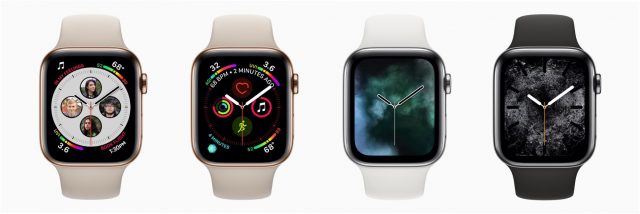
- Face lifts: The popular Modular watch face, with its large center complication showing an extended snippet of information, now features more options, including data from Apple’s Activity, Heart Rate, and Stocks apps. It also supports more third-party apps, allowing users to show scores from the MLB At Bat app and flight info from the Qantas app, among others. These changes are available for older models running watchOS 5 too. In its Series 4 version, the Modular face gets a slight name change to Infograph Modular.
Health: Watching for Falls and Abnormal Heart Events
The original Apple Watch struggled a bit to justify its existence, with Apple focusing initially on the fashion market. In subsequent updates, Apple turned its attention to fitness, where the Apple Watch has proved popular. With the Apple Watch Series 4, the company is now concentrating on making the Apple Watch into a health-tracking device.
Accordingly, Apple trotted out some new health-related features to make the Series 4 more of an “intelligent guardian of your health.”
Fall Detection
If a user takes a hard fall, the Apple Watch can now detect that event thanks to that next-generation accelerometer and gyroscope. The fall-detection capability can monitor “repeatable, identifiable patterns” such as wrist trajectory and impact acceleration to determine if a user has fallen, or just slipped or tripped.
What happens after a hard fall depends on the circumstances. The Apple Watch initially displays an alert with an option to contact emergency services for help. If the user doesn’t move within 1 minute, the watch automatically notifies emergency services along with designated emergency contacts. The feature is reportedly on by default only if the user is over 65; younger people will have to turn it on manually.
Improved Health Monitoring
The Apple Watch has helped many people track their health through its ability to measure such things as calories burned, resting heart rate, and abnormally high heart rates via an optical heart sensor. Apple is now building on these capabilities with additional health-monitoring features.
Most notably, Series 4 users will soon be able to record an electrocardiogram (ECG) with Apple’s new ECG app. An ECG can help determine if your heart is beating normally, or if it’s showing signs of atrial fibrillation (AFib), a condition that can lead to significant health complications such as strokes.
To take an ECG reading, you’ll touch the Digital Crown for about 30 seconds to receive a heart-rhythm classification courtesy of a new electrical-heart sensor with electrodes built into the dial and back crystal. Apple’s Health app stores those readings, and you can share them with doctors. (This capability was previously available via a $200 add-on product called Kardiaband.)
In addition, the Apple Watch can intermittently analyze heart rhythms in the background and send a notification if an irregular heart rhythm—such as AFib—is detected. It can also alert you if your heart rate is too high or too low, which is potentially a sign of something serious. These features also are made possible by the optical heart sensor.
The ECG app along with irregular-rhythm notifications are due later this year.
The Apple Watch’s new health-monitoring features are getting nods from the American Heart Association and the U.S. Food and Drug Administration, giving the smartwatches increased credibility as health devices.
The Apple Watch Lineup
The Apple Watch Series 4 starts at $399 for GPS-only models and $499 for cellular-capable models (cellular connectivity requires an additional monthly cell plan). The Apple Watch Series 3 previously started at $329 for the basic model and $399 for the cellular model, making the new models pricier propositions.
For those who don’t want to spend so much and aren’t in need of the new capabilities of the Series 4, Apple is continuing to sell the Apple Watch Series 3, with a new starting price of $279 for the GPS-only model and $379 for the cellular model.
Along with the three aluminum finishes anodized in silver, gold, and space gray, the Apple Watch Series 4 is available in a gold-colored stainless steel with a matching Milanese band, joining stainless steel models in silver and space black.
The new watches became available for pre-order on 14 September 2018 and will ship 21 September 2018.
Notably missing from the announced lineup is the ceramic Apple Watch Edition, which is no more. It turned out that people didn’t want to spend up to $17,000 for a gold Apple Watch Edition at the device’s initial launch, and they apparently aren’t interested in spending more than $1,000 for a ceramic Apple Watch Edition either.
Apple is, as usual, trotting out new watch bands, but the company emphasizes that all existing bands will work just fine with the new, bigger watches and vice versa. Similarly, the niche Nike+ and Hermès versions of the Apple Watch come with new bands and matching watch faces. Notably, there’s a Nike+ Sport Loop with reflective yarn for safer outdoor, low-light workouts.
With the release of the Apple Watch Series 4, the buying decision becomes more difficult. The new health-monitoring features are particularly compelling, particularly for older folks who are concerned about falls or heart health, but they’re accompanied by increasingly steep price tags. If the price is a problem, the Series 3 remains available, but without some of the attractive new features.
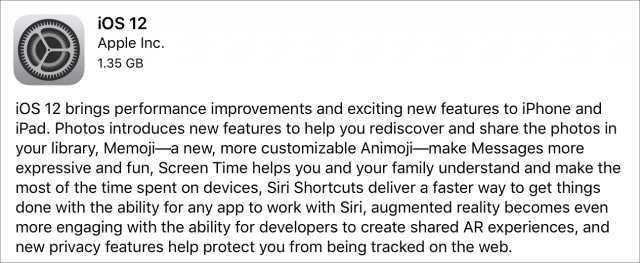
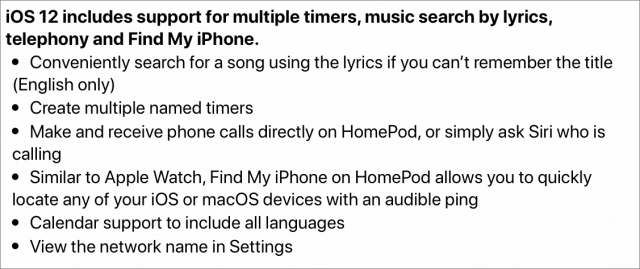
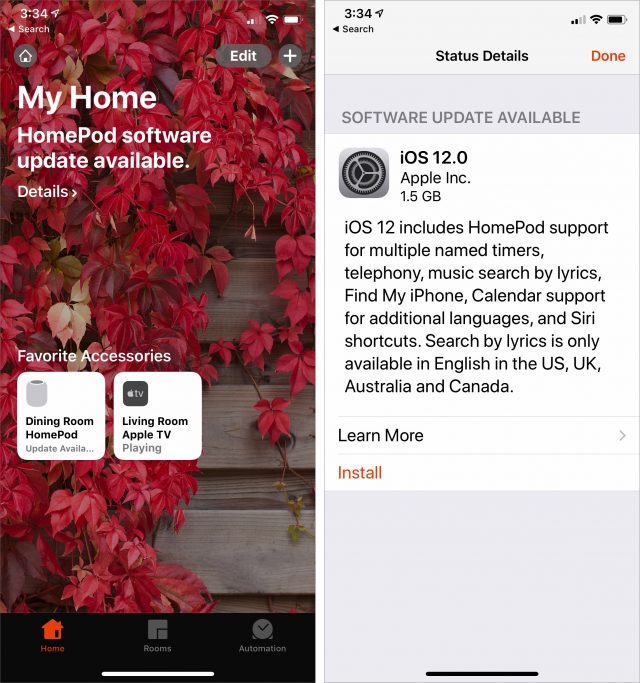
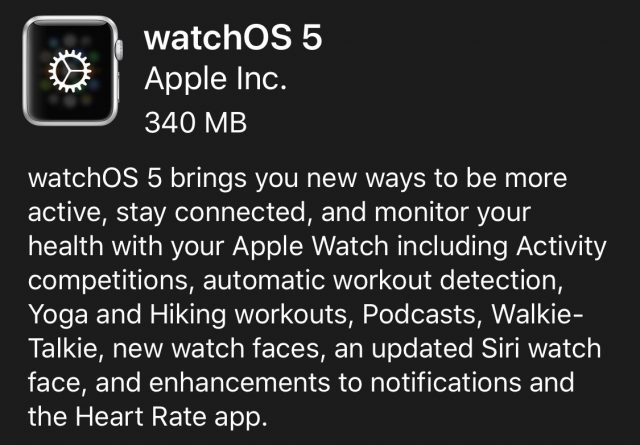
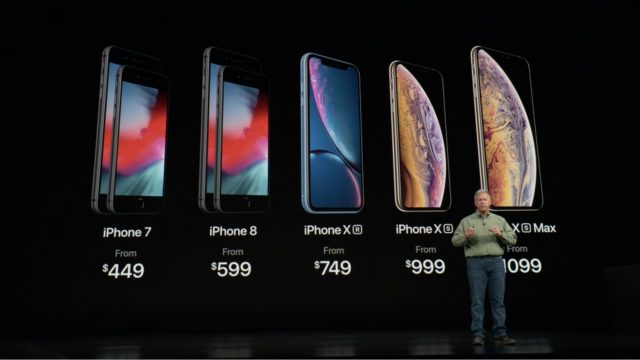
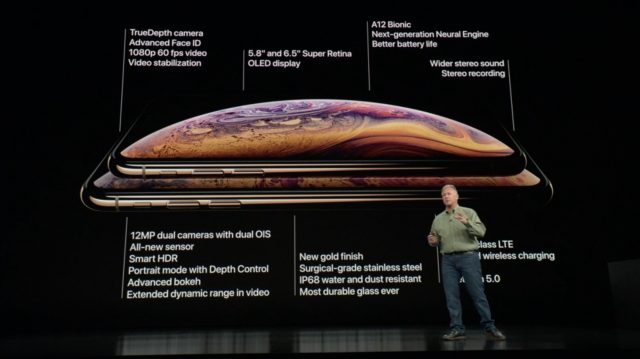
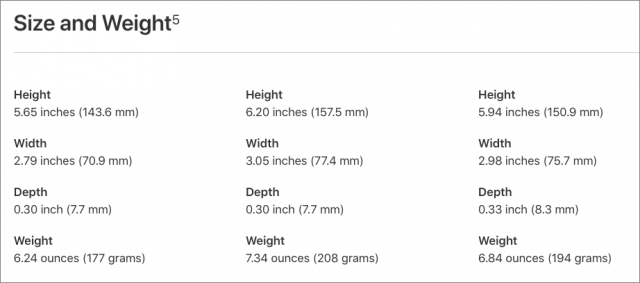
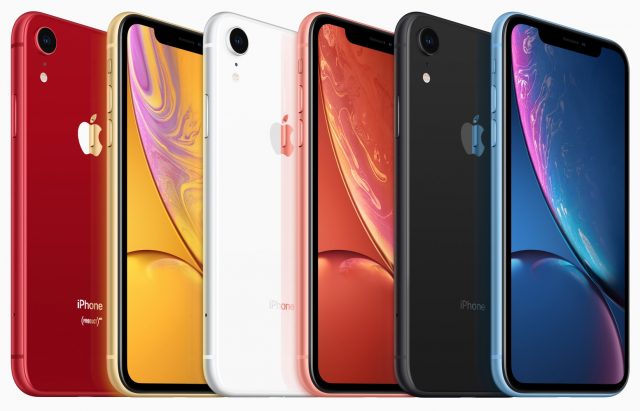
 Adam Engst
2
comments
Adam Engst
2
comments
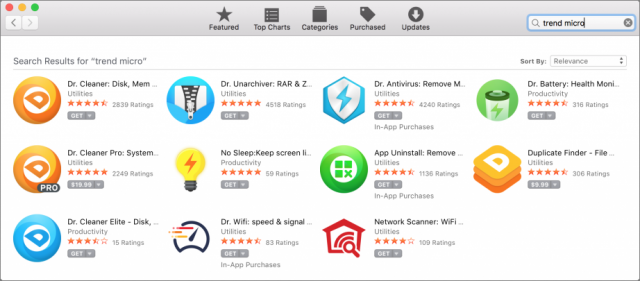
 Josh Centers
6
comments
Josh Centers
6
comments
 Josh Centers
No
comments
Josh Centers
No
comments